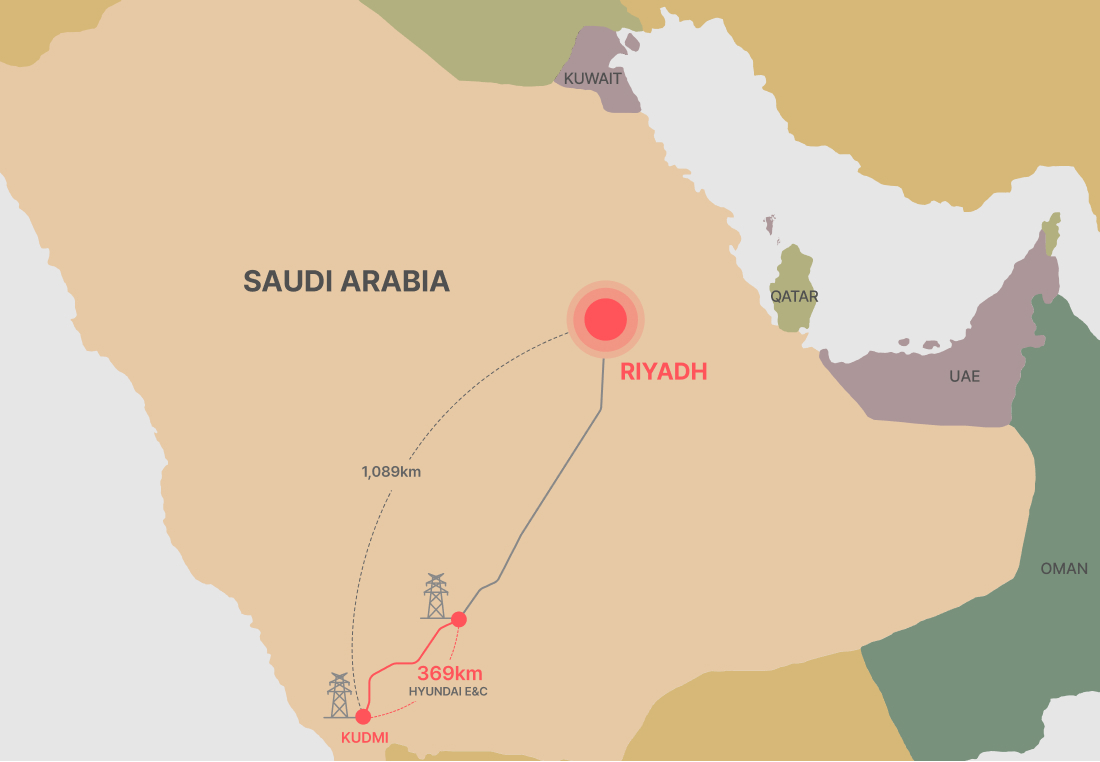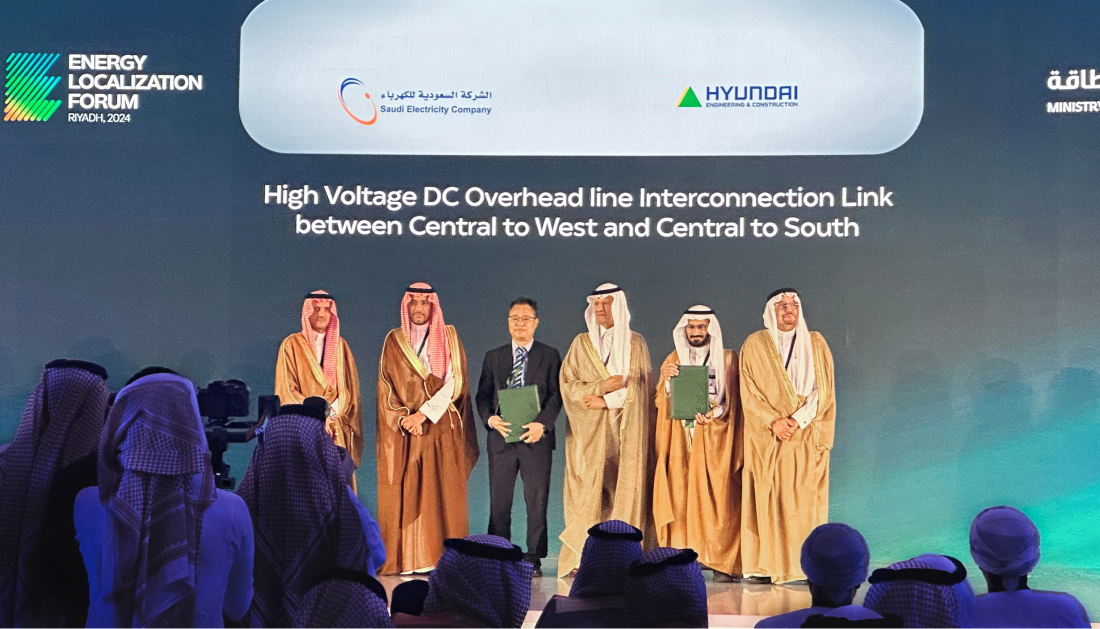Press Release
Hyundai E&C Makes History in Saudi Power with Next-Generation Transmission Technology
▲ Contract signed with Saudi Electricity Company in Riyadh on the 11th (Mon.)
… Construction of Saudi Arabia’s first 4,000 MW HVDC bipolar transmission line, largest deal in transmission history
… Hyundai E&C to engineering, procure, and construct the initial 369-km section of the line, scheduled for completion in January 2027
▲ As a longtime strategic partner to Saudi Arabia's energy sector, Hyundai E&C expands multifaceted cooperation under Vision 2030
… Builds on power sector partnerships established at the Energy Localization Forum held in Riyadh last month
… Advanced technology and construction expertise to support Saudi’s next-generation power grid and strengthen energy sector cooperation

[ A location map of the Saudi Riyadh-Kudmi 500kV HVDC transmission line construction project, engineered as a bipolar HVDC transmission line ]
Hyundai E&C has secured a megaproject worth KRW 1 trillion in Saudi Arabia, building next-generation transmission technology.
On the 11th (local time), Hyundai E&C signed a contract with the Saudi Electricity Company (SEC) in Riyadh, the capital of Saudi Arabia, for the construction of the ‘Saudi Riyadh-Kudmi 500kV High Voltage Direct Current (HVDC) transmission line’, valued at USD 725 million. This is the largest project in Hyundai E&C’s history since entering the Saudi power grid market.
The Riyadh-Kudmi Transmission Line Construction Project involves constructing a total of 1,089 km of HVDC transmission line from the Combined Cycle Power Plant 14 (PP14) in Riyadh to Kudmi on the southern coast. Hyundai E&C is responsible for the initial 369-kilometer section near Kudmi, with completion scheduled for January 2027.
Having successfully delivered numerous power grid projects for the SEC and built a strong relationship of trust, Hyundai E&C secured this project as a turnkey contract, covering engineering, procurement, and construction. Such feat reaffirms the company’s world-class technology and capabilities.
The HVDC transmission line is a technology that converts alternating current (AC) power generated by a power plant into high-voltage direct current (DC) for transmission to destination. Compared to traditional AC transmission, HVDC has been gaining attention as a next-generation transmission technology due to its lower energy losses over long distances, as well as its superior reliability and efficiency. Starting with the construction of the 500kV Madinah-Tabuk-Aqaba transmission line in 2021, Hyundai E&C has been leading the HVDC era in Saudi Arabia, a country in urgent need of power grid expansion, by securing the 525kV Neom-Yanbu transmission line project last year. Notably, the HVDC transmission line under construction will be the first to introduce the HVDC Double Bipolar structure in Saudi Arabia, with a power capacity of 4,000 ㎿.
Hyundai E&C's latest order is especially noteworthy as it builds on a partnership established at the Energy Localization Forum hosted by the Saudi Ministry of Energy last month. During this event, which set up strategic partnerships with companies across various sectors, including ▲ power, ▲ renewable energy, ▲ oil and gas, and ▲ supply chain and services, Hyundai E&C was tasked with constructing an ultra-high voltage transmission network to expand the power grid, showcasing its advanced technology in this field.
A Hyundai E&C representative stated, “Hyundai E&C, recognized for its unmatched power grid construction capabilities in Saudi Arabia, has secured the largest power transmission project in history thanks to its next-generation technology.” He added, “By successfully executing this HVDC transmission line project, which is gaining attention as the core of the renewable energy grid industry, we will set a new milestone in Saudi Arabia's power transmission history.”
Since entering the Saudi construction market in 1975, Hyundai E&C has successfully completed a total of 35 transmission line projects. Including current projects, the company has built over 20,000 ㎞of power grids. Notably, as Hyundai E&C sets a new milestone in the globally recognized HVDC field, it plans to further strengthen its position in power infrastructure by actively expanding into new markets, such as Saudi Arabia and Australia, and by participating in renewable power grid projects.



